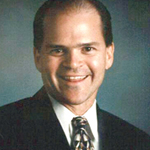Know the Key Ages When Visual Issues Begin
The earlier a visual problem is detected, the better. And early detection works best when parents know the warning signs.
There are critical ages when problems can surface, indicating that a child’s visual system is developing abnormally, according to Dr. Rick Graebe, a behavioral optometrist in Versailles.
Dr. Graebe treats some patients with Vision Therapy, a noninvasive technique that is a kind of physical therapy for the eyes, brain and body.
He recommends that parents recog-nize these key developmental stages.
Age 3: This is when children stop using taste, smell and touch to “see,” and the visual system becomes dominant.
At this age, strabismus and/or amblyopia (lazy eye) can begin where the eyes stop working in tandem, and one begins to wander, turn in or turn out.
“The brain says, ‘I can’t use both eyes – it’s too hard,’” Dr. Graebe said. “So the brain will turn off one eye.”
In the U.S., 75,000 3-year-olds per year will suffer from amblyopia. With amblyopia, the eye does not always wander or turn. The signs may not appear right away and can be detected only by an eye exam.
Dr. Graebe not only recommends an exam at this age, his office offers free visits for 3-year-olds to catch the problem early.
Age 6: This is when children start school, and sustained, close-up visual work is required for the first time.
A child with visual issues may avoid reading, have headaches, rub eyes, cover one eye to read or become fidgety when reading.
Teachers often pick up on these warning signs first.
Age 10: At school, children first “learn to read.” Thereafter they “read to learn,” a process that dominates the classroom by the time a child is 10.
If visual problems surface then, classroom performance may begin to drop.
When school issues emerge, parents need to ask one question: “Is my child reaching his potential?”
If not, the problem could be visual.
As Dr. Graebe says, because “70% of what we perceive after the age of 3 comes through the visual system, where would be a good place to start?” ”

